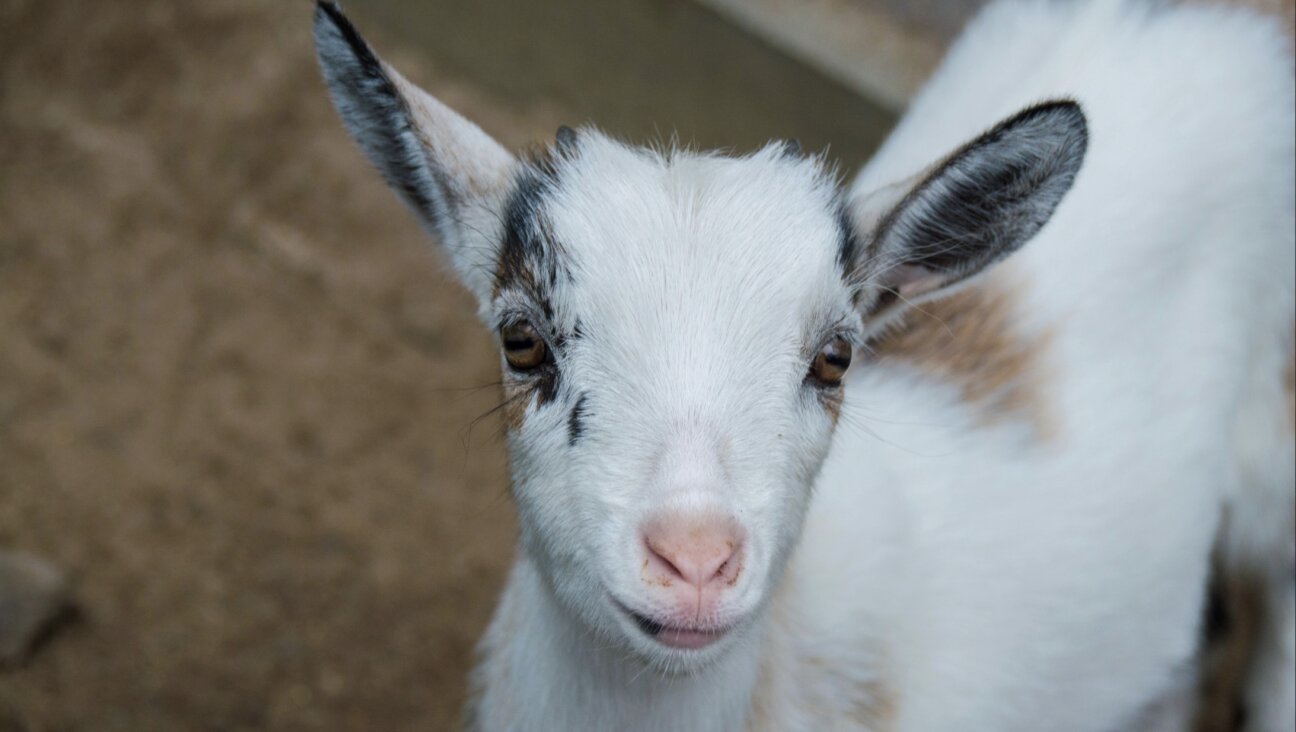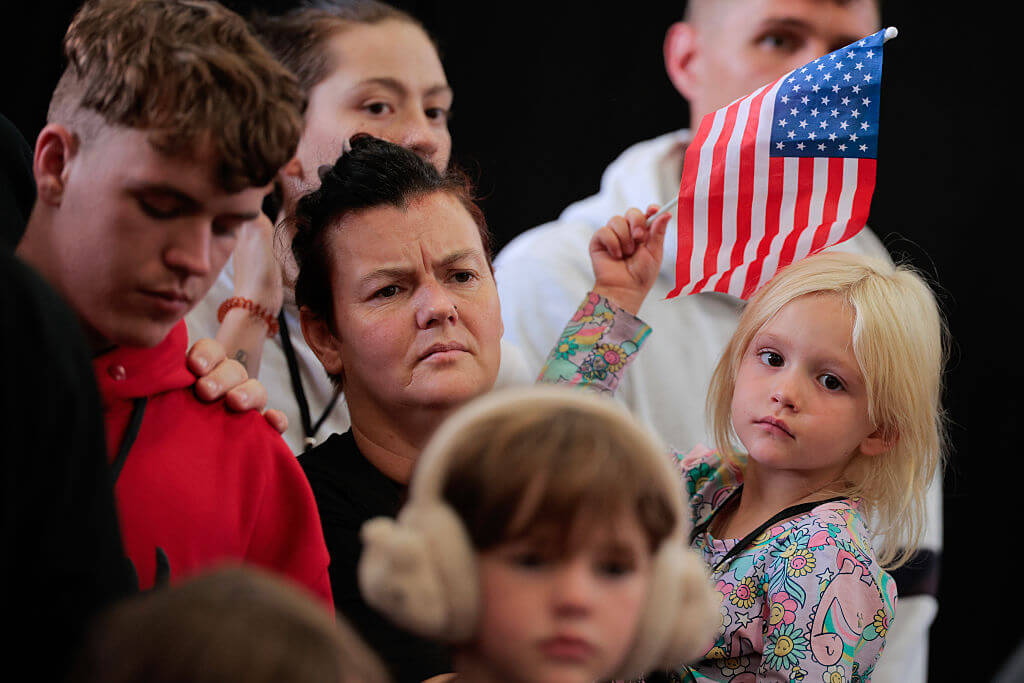Can New Tzitzit Unite Hebrew Israelites?

In the biblical Book of Numbers, God instructs the Israelites, “Throughout the generations to come, you are to make tassels on the corners of your garments, with a blue cord on each tassel.” In Deuteronomy, God reminds, “You shall make yourself twisted cords, on the four corners of your garment with which you cover yourself.”
God brings it up twice, so it must be important.
Because of these divine instructions, modern-day Jews, and even some Christians, wear ritual tassels, or tzitzit, on their clothing. Everyone does it a bit differently, and the differences have sometimes been the source of disputes and debates: What color blue? Should women also wear tassels? Made with what fabric?
Ashkenazi Jews have their style, Karaite Jews have theirs. Ethiopian Jews and the Samaritans of Nablus, too.
Now, Israelite leaders are looking to come up with their own distinctive version — and in the process, bridge past divides within the community.
Hebrew Israelites are people of color, mostly African American, who claim ancient ancestral connections to the Israelites. The movement draws from earlier black nationalism, and members believe that their ancestors’ capture and enslavement in the Americas was prophesied in antiquity.
Within the century-old movement, these tassels have been cause for debate, reflecting larger tensions about race and spiritual practice.
The crux of the issue is this: Some Hebrew Israelites say their movement should align with rabbinic Judaism — while others embrace a more Afrocentric, or cultural, identity.

A diverse gathering of Israelites celebrates the inauguration of a chief rabbi this August at Bnai Adath Kol Beth Yisrael in Brooklyn, a congregation that amalgamates both rabbinic and cultural approaches. Image by Sam Kestenbaum
“The Israelite Board of Rabbis advocates that we create a tzitzit for our community,” wrote Rabbi Sholomo Ben Levy, president of the International Israelite Board of Rabbis. The tzitzit “will provide a degree of uniformity that will define us in relation to other Jewish communities around the world.”
In November, Levy posted a detailed tzitzit proposal online for the community to read. He even included illustrations and cabalistic analysis. The proposal is being disseminated and discussed within the community, and Levy wants feedback. “We welcome feedback, constructive criticism, and recommendations for improvement,” he wrote.
The board claims official affiliation with about only a dozen congregations nationwide, but commands larger authority because of its historic link to a patriarch of the movement, Rabbi Wentworth Arthur Matthew, who founded his congregation in 1919.
In August, the board inaugurated a chief rabbi, filling a position that had been vacant for over a decade. Rabbi Capers Funnye, a high-profile cleric from Chicago (and cousin to first lady Michelle Obama), now presides over the board and hopes to unify this movement, and — more than any previous leader — seeks stronger connections with the State of Israel and other Jewish organizations.
Instituting uniform customs and traditions is central to his mission.
Funnye, unlike most Israelite leaders, went through a halachic conversion in a Conservative rabbinical court. Many Israelites view halachic conversion as antithetical to their identities, as they already understand themselves as descendants of the ancient Hebrews.
Hebrew Israelites are a diverse group. There are numerous groups that are not associated with the board and have their own leaders and traditions.
And even the Israelites in the orbit of the board vary in their practices. There is a spectrum, but these Israelites are broadly divided between those who see themselves primarily as “cultural” Israelites — who read only the Torah, see little need for the Talmud and have a more Afrocentric approach — and those who are “rabbinical” and who study the Talmud.
Funnye and other rabbis on the board have said they want to bridge these divides. “We can blend ourselves together and move forward in building a community that is going to be respected worldwide,” Funnye said. But mending those rifts could still pose a challenge.

Uzziel Lewi, a Hebrew Israelite spiritual leader from Brooklyn, belongs to a congregation that identifies with Israelite culture, not rabbinic tradition. Image by Sam Kestenbaum
This division can be traced back to the 1960s.
Following failed outreach efforts with other American Jewish organizations, combined with greater interest in African roots among black Americans, many Israelites deliberately distanced themselves from Euro-American Jewish traditions. They saw the rabbinical traditions as “white” — and embraced more Afrocentric rituals.
In New York, a historic hub of the movement, a student of Matthew’s, named Cohen Levi, “advocated a break from Jewish traditions” and “embraced an Afrocentric Israelite culture,” according to an article on the website BlackJews.org by Levy.
“Cultural” Israelites “rid themselves” of the “yarmulkes that Jews wore on their heads and replaced them with knitted or crocheted head coverings; they also wore West African garb with the addition of tzittzit (fringes) on the corners of their garments” as well as turbans and long robes.
At times, the “insistence or avoidance of African attire becomes an absolute and emphatic statement about belief,” reads an article on Levy’s website.

The Israelite Board is proposing the creation of a new Israelite tzitzit, to both introduce rabbinic formalization and distinguish the tradition from other Jewish groups. Image by BlackJews.org
“At its worst,” the article continues, “African and Western attire become the equivalent of gang colors, superficially dividing one group from another.”
These tensions have eased since the 1960s, for sure. But this decades-old divide can still be felt today.
“This is a tradition that we picked up as trying to separate ourselves,” said Uzziel Lewi, a leader at Da’ath, Chomah, Binah, a Brooklyn congregation with an Afrocentric leaning which carries on the tradition of Cohen Levi. “[Our teachers] looked at it as being passed down from the Jewish man, so they wanted to have their own tradition and their own way of identifying with the tradition.”
The language in the Torah itself does not specify the number of knots or twists needed in tzitzit. There has also been a long debate in Jewish circles about whether tzitzit must include a blue thread — a command that appears in the Bible, but which later rabbinic sources said was unnecessary. The cultural Israelites, like Lewi, have tended to choose a literal reading of the passage, and include a blue thread. Cultural Israelites have also held that women are included in the Torah’s phrase “children of Israel” and should also wear tzitzit; rabbinic Israelites have not.
The new proposal seeks to bridge the divide between the two schools of thought. While dictating the number of knots or twists needed, it also includes the blue thread, and allows for women to wear tzitzit.
“They’ve been trying for years to codify, at least among members of the board, standard ritual practices,” said André Key, a professor of African-American studies at Claflin University and the author of “Toward a Typology of Black Hebrew Thought and Practice.” “At the same time, they want to stake out a unique sense of identity or Israelite customs.”
The proposal attempts a balancing act. “You have the influence of more orthodox perspectives,” said Key, “and you also have the more cultural nationalism.”

Rabbi Sholomo Ben Levy, president of the Israelite Board of Rabbis, is proposing a uniform design for Israelite tziztzit. Image by Sam Kestenbaum
At many congregations today, there is already an organic amalgamation of the two approaches. For example, at Bnai Adath Kol Beth Yisrael in Brooklyn, the rabbi may wear a turban with a large tallit draped over his shoulders; a band of drummers in dashikis will accompany during services. And at Da’ath, Chomah, Binah, one leader is studying Talmud and earning his ordination through the board’s rabbinical program.
Towards the end of Levy’s proposal, he references a biblical verse from the book of Isaiah, popular among Hebrew Israelites, in which God promises to “assemble the dispersed of Israel, and gather together the scattered of Judah from the four corners of the earth.”
The four tassels of the tzitzit, Levy says, represent this dispersal. It’s symbolism evoked by other branches of Judaism, but has a special resonance for Israelites.
“Those of us who were scattered throughout Africa millennia ago are in the process of returning to our God and reclaiming our true identity,” Levy writes. “When we look at the four corners of the tzitzit and we look in the mirror we see the fulfillment of God’s prophecy.”
Email Sam Kestenbaum at [email protected]
























